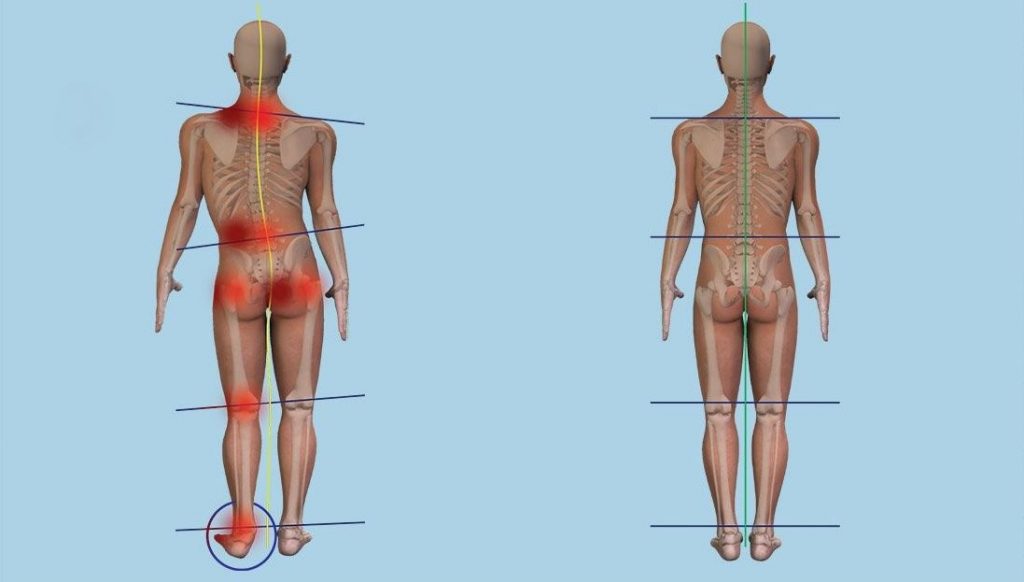Leg-length discrepancies (LLDs) are a common finding in individuals who have had hip replacements, have scoliosis, pelvic imbalance or muscle contractures. Leg length discrepancies (LLD) can be identified in two different ways: as a structural leg length discrepancy or a functional leg length discrepancy.
Structural leg length discrepancy (SLLD) involves a femur or tibia that is literally shorter on one side than the other. This anatomical inequality in bony structure causes the pelvis to tilt so that one side is lower than the other which over time can lead to spinal changes such as scoliosis.

Functional Leg Length Discrepancies (FLLD), also called an "apparent leg length discrepancy," is a unilateral shortening of the limb that is caused by muscle contractures, poor pelvic rotation, or other causes such as joint stiffness or arthritis.
Both structural and functional leg length discrepancies can lead to gait abnormalities and symptoms. Asymmetries in leg length mean that the longer leg bears more weight for more time, with cumulative effects that may include increased risk of hip or knee osteoarthritis. People with leg length discrepancies tend to compensate with strategies that help equalize functional leg length and minimize the translation of the center of gravity. Severe leg length discrepancies may be associated with more significant symptoms that include weakness, nerve injury, joint stiffness, joint dislocation, chronic pain, arthritis, standing fatigue or plantar fasciitis.
Sole Remedy specializes in gait analysis and musculoskeletal functional assessment. We provide solutions for limb length discrepancies including shoe modifications.
Call today for an appointment!
Sole Remedy specializes in gait analysis, foot type assessment, musculoskeletal injury management and fall prevention.
Phone: 508-295-8800 or 855-FOOT RX 9 to schedule an appointment today!
